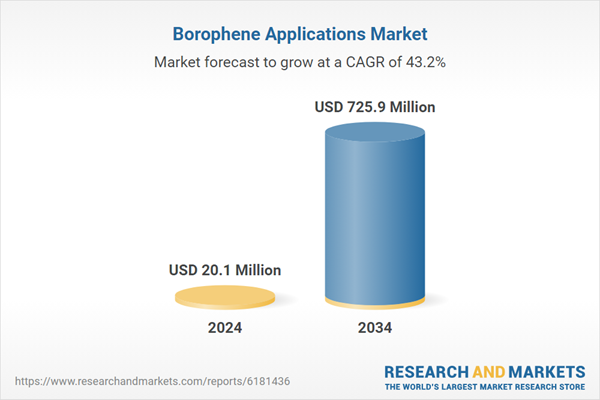This extraordinary growth is driven by borophene’s unique combination of electrical conductivity, flexibility, and directional properties, which outperform many traditional materials in advanced sectors. With rising global momentum around renewable energy and electric mobility, the demand for next-generation battery components is gaining traction. Borophene has emerged as a high-potential candidate due to its extremely high theoretical capacity in lithium-ion battery systems and suitability for use in supercapacitor electrodes. Although the material's commercial scalability remains a challenge because of its sensitive synthesis requirements, recent technological advancements have significantly improved production techniques. These include innovations in chemical processing and exfoliation technologies, which are making way for larger-scale deployment. Current studies indicate that borophene offers lithium storage potential far exceeding traditional graphite anodes, positioning it as a revolutionary option in future energy solutions. Its metallic characteristics, combined with tunable electronic behavior, offer transformative potential not just in storage systems but across electronics, sensors, and catalytic processes. The market’s rapid acceleration reflects not only its performance capabilities but also rising investments into material innovation.
The chemical vapor deposition (CVD) technology generated USD 5.2 million in 2024 to reach USD 184.3 million by 2034, driven by its ability to generate borophene films with consistent thickness, structure, and superior quality. CVD enables high reproducibility and precise control over synthesis variables, which is crucial for manufacturing borophene with specific traits suited for advanced use cases. This process seamlessly integrates with existing semiconductor fabrication platforms, enhancing its relevance for applications in the electronics space. Additionally, the emergence of plasma-assisted and low-temperature CVD approaches is making the process more commercially scalable while reducing production costs, further driving adoption.
The energy storage and conversion segment held a 42.2% share in 2024. This segment benefits greatly from borophene’s superior conductivity, high theoretical energy capacity, and fast charge/discharge response attributes that are being actively researched for integration into lithium-ion batteries, hydrogen systems, and fuel cell components. Significant financial backing is being directed by global energy and battery technology players to accelerate R&D efforts that push borophene toward practical deployment in clean energy infrastructure.
North America Borophene Applications Market accounted for USD 5.6 million in 2024 and is expected to reach USD 187.7 million by 2034, growing at a CAGR of 42%. The region benefits from a well-established ecosystem of academic institutions, advanced materials startups, and supportive venture capital. Strong ties between scientific research and industrial development are propelling innovation, especially in fields like electronics and defense technologies, where borophene is gaining increased attention.
Key players shaping the Global Borophene Applications Market include Nano Pro Ceramic, Veeco Instruments, Applied Materials, Eti Maden, and Rio Tinto. Companies in the borophene applications market are deploying multi-pronged strategies to secure and expand their market positions. Major players are prioritizing heavy R&D investment to unlock scalable production methods and refine material quality for advanced use cases. Partnerships between technology providers and academic institutions are helping accelerate material innovation and commercialization. Firms are also integrating borophene production capabilities with existing infrastructure to lower costs and improve speed to market. Strategic alliances, mergers, and acquisitions are being leveraged to gain proprietary technologies and strengthen intellectual property portfolios.
Comprehensive Market Analysis and Forecast
- Industry trends, key growth drivers, challenges, future opportunities, and regulatory landscape
- Competitive landscape with Porter’s Five Forces and PESTEL analysis
- Market size, segmentation, and regional forecasts
- In-depth company profiles, business strategies, financial insights, and SWOT analysis
This product will be delivered within 2-4 business days.
Table of Contents
Companies Mentioned
The companies profiled in this Borophene Applications market report include:- Rio Tinto
- Eti Maden
- Applied Materials
- Veeco Instruments
- Nano Pro Ceramic
- Graphene Manufacturing Group
- American Elements Corporation
- Suzhou Graphene
Table Information
| Report Attribute | Details |
|---|---|
| No. of Pages | 210 |
| Published | October 2025 |
| Forecast Period | 2024 - 2034 |
| Estimated Market Value ( USD | $ 20.1 Million |
| Forecasted Market Value ( USD | $ 725.9 Million |
| Compound Annual Growth Rate | 43.2% |
| Regions Covered | Global |
| No. of Companies Mentioned | 9 |









